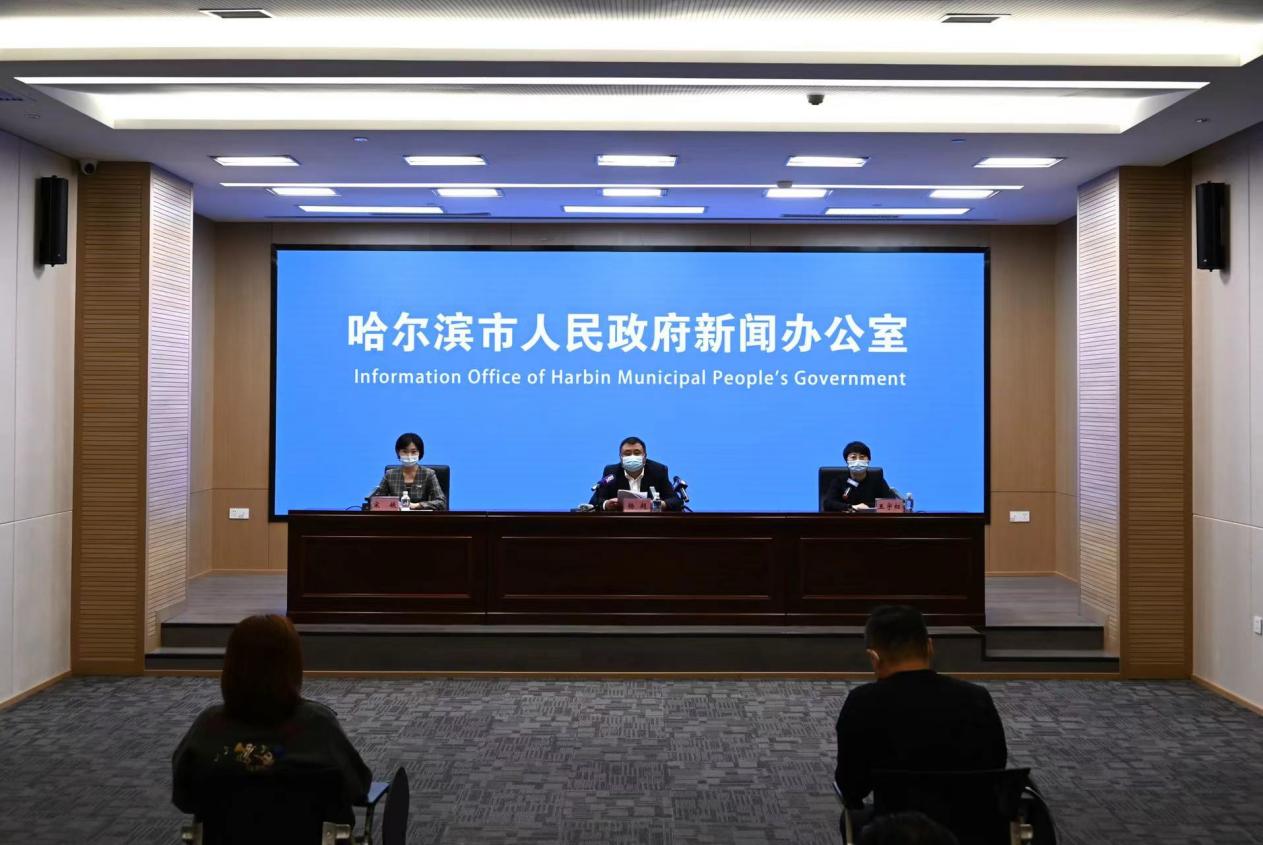Regulations on handling social insurance
Since its official implementation on December 1, 2023,
Everyone is very concerned about what service measures are available for the convenience and benefit of the people.
I shared some social security hot questions and answers with you before.
Click the link below to review it ~
The new social security regulations will be implemented today! These hot issues need to be understood, and today we have sorted out some more.
Issues of concern to everyone.
Come and have a look ~

Q1
What should individuals do if they stop enjoying social insurance benefits as stipulated by the state?
When an individual ceases to enjoy social insurance benefits as stipulated by the state, for example, when an individual receiving a basic pension dies or is in prison, the employer, the person enjoying the benefits or their relatives shall inform the social insurance agency within 20 working days from the date of the relevant situation. The social insurance agency shall stop issuing the corresponding social insurance benefits after verification.
Q2
How does the social insurance agency verify the eligibility for treatment?
The "Regulations" stipulate that social insurance agencies shall verify the eligibility for social insurance benefits through information comparison and self-service certification. If it is impossible to confirm the eligibility of social insurance benefits through information comparison and self-service certification, the social insurance agency may entrust the employer or a third-party institution to verify.
At present, local social insurance agencies mainly share data with public security, justice, civil affairs, transportation, health, medical insurance, courts and other departments through internal data comparison, and promote self-service authentication methods such as face recognition to verify the eligibility of social insurance benefits.
Q3
What requirements does the Regulations put forward for cross-departmental and cross-regional social insurance handling?
The "Regulations" stipulate that social insurance agencies should rely on social insurance public service platforms and medical security information platforms to achieve cross-departmental and cross-regional social insurance management.
In recent years, the human and social departments have accelerated the construction of a unified national social insurance public service platform. In 2019, the national social insurance public service platform was put into operation. By the end of September, 2023, the national social insurance public service platform had provided 83 national and trans-regional social insurance services, such as rights inquiry, transfer application, qualification certification, treatment calculation, unemployment insurance benefits application, work injury identification, etc., and realized cross-departmental and trans-regional information sharing and business collaboration from inquiry to business acceptance.
Q4
What are the requirements of the Regulations for the construction of social insurance handling system?
The "Regulations" stipulate that the administrative departments of human resources and social security and medical security should strengthen the service capacity of social insurance to achieve full coverage of provinces, cities, counties, towns (streets) and villages (communities).
China has basically established a five-level social insurance management system and service network from the central government to provinces, cities, counties and towns (streets). By the end of 2022, there were more than 5,300 basic old-age insurance, industrial injury insurance and unemployment insurance agencies nationwide, and the service network covering urban and rural areas was increasingly sound. The function of the grid service platform continued to improve, and the convenience and accessibility of services were significantly improved.
Q5
What channels can employers and individuals handle social insurance affairs?
Employers and individuals can handle social insurance affairs through government websites, mobile terminals, self-service terminals and other service channels, or go to the social insurance handling window for on-site handling.
At present, the national social insurance public service platform, government website, mobile terminal and self-service terminal have become the main channels for employers and individuals to handle social insurance affairs, and high-frequency social insurance services such as social insurance personal rights record inquiry and pension insurance relationship transfer and connection can be handled online.
Q6
What convenient services should social insurance agencies provide for special groups such as the elderly and the disabled?
The Regulations stipulate that social insurance agencies should strengthen the construction of barrier-free environment, provide barrier-free information exchange, improve barrier-free service facilities and equipment, and provide convenience for special groups such as the elderly and the disabled by means of authorized agency and on-site service.
In practice, the convenient services provided by local social insurance agencies for special groups such as the elderly and the disabled mainly include: the service places are equipped with guides, the on-site reception windows are set up, and special groups are given priority; Improve the service of handling the agency and promoting the "one-stop" service; Building barrier-free ramps, setting up barrier-free signs, and providing barrier-free toilets; Provide on-site service for the elderly at home, especially for key groups such as the elderly, seriously ill, disabled and empty nest.
Q7
What are the provisions of the Regulations on reducing the proof materials submitted for handling social insurance affairs?
On the basis of fully summarizing the experiences and practices of social insurance agencies in various places, the Regulations adhere to the people-centered principle, follow the principles of legality, convenience, timeliness, openness and safety, achieve "all reductions should be made", effectively reduce all kinds of certification materials, and cancel a number of unnecessary certification materials such as marriage certificate, work injury identification conclusion, termination or dissolution of labor relations required by relevant laws, regulations and workflow.
Q8
Can employers and individuals inquire about their own social insurance related records?
The "Regulations" stipulate that social insurance agencies provide employers and individuals with related services such as inquiring and checking social insurance payment, enjoying social insurance treatment records and social insurance consultation free of charge.
Employers and individuals can enjoy online services such as inquiring and checking payment and consulting social insurance treatment records under the social insurance handling window, and can also realize online inquiry of relevant information through national social insurance public service platforms or local social insurance public service platforms, mobile terminals and self-service terminals. Online and offline inquiry and consultation services provided by social insurance agencies are free services.
Q9
Why do you want to sign a service agreement with social insurance service agencies?
The "Regulations" stipulate that social insurance agencies shall, according to the needs of handling work, negotiate and sign service agreements with qualified institutions to regulate social insurance service behavior. Signing a service agreement is conducive to the certainty and clarity of rights and obligations between social insurance agencies and service agencies, and to the mutual supervision among agencies, service agencies and insured persons.
Q10
What are the provisions of the Regulations on the information management of social insurance agencies?
The "Regulations" stipulate that social insurance agencies shall properly keep social insurance agency information to ensure that the information is complete, accurate and safe.
Social insurance handling information is related to the legitimate rights and interests of employers and individuals. Social insurance handling institutions should record social insurance handling information in a timely, complete and accurate manner and keep it properly to prevent information from being leaked, tampered with or lost.
Q11
What are the provisions of the Regulations on the internal control of social insurance agencies?
The Regulations stipulate that social insurance agencies shall establish and improve internal control systems such as business, finance, safety and risk management. The social insurance agency shall regularly inspect and evaluate the formulation and implementation of the internal control system, and rectify the problems found.
Q12
What matters should the social insurance agency check?
The "Regulations" stipulate that social insurance agencies shall check the following matters: (1) Social insurance registration and treatment enjoyment; (two) the social insurance service institutions to fulfill the service agreement, the implementation of cost settlement items and standards; (3) Other matters stipulated by laws and regulations.
In practice, social insurance agencies take the methods of daily verification, key verification and report verification, and carry out verification on social insurance registration and treatment enjoyment, social insurance service institutions’ performance of service agreements, and implementation of expense settlement items and standards according to laws and regulations, which has played an important role in maintaining the security of social security funds.
Q13
How does the social insurance agency handle the violation of the service agreement by the social insurance service agency?
Social insurance service institutions shall provide services in accordance with the service agreement and the relevant provisions of the state, and social insurance agencies shall manage social insurance service institutions through the service agreement.
If the social insurance agency finds that the social insurance service institution violates the service agreement, it can urge it to perform the service agreement, suspend or not allocate the fees, recover the illegal fees, suspend the social insurance services involving the use of social insurance funds by the relevant responsible personnel or departments in accordance with the service agreement, until the service agreement is terminated; Social insurance service institutions and their relevant responsible personnel have the right to make statements and defend themselves.
Q14
How do social insurance agencies deal with violations of social insurance laws, regulations and rules?
Social insurance agencies shall order employers, individuals and social insurance service agencies to make corrections if they find that they violate social insurance laws, regulations and rules. Those who refuse to make corrections or should be handled by the administrative departments of human resources and social security and medical security according to law shall be handed over to the administrative departments of human resources and social security and medical security for handling in time.
Q15
What are the provisions of the Regulations on the credit management of social insurance?
The "Regulations" stipulate that the administrative departments of human resources and social security and medical security in the State Council shall, jointly with relevant departments, establish a social insurance credit management system, and clarify the criteria for identifying the list of serious untrustworthy subjects in the social insurance field. Social insurance agencies shall truthfully record the acts of dishonesty of employers, individuals, social insurance service institutions and their staff in violation of social insurance laws and regulations.
Q16
Do individuals need to return the social insurance benefits they have enjoyed?
Need. The "Regulations" stipulate that individuals who enjoy more social insurance benefits shall be ordered to return by social insurance agencies. For individuals who enjoy more social insurance benefits, in principle, they should be returned in one lump sum. If it is difficult to return it at one time, a repayment agreement can be signed to return it by stages, or it can be deducted from the social insurance benefits or personal account balance it enjoys later.
Q17
Does the individual have the obligation to cooperate with and accept the supervision and inspection in the field of social insurance?
Yes. The Regulations stipulate that the administrative departments of human resources and social security and medical security shall, in accordance with their respective duties, strengthen the supervision and inspection of social insurance service institutions, employers and individuals’ compliance with social insurance laws, regulations and rules. Social insurance service institutions, employers and individuals shall cooperate with each other, truthfully provide information related to social insurance, and shall not refuse to check or make false or concealed reports.
Q18
Can employers and individuals supervise social insurance handling?
Sure. The "Regulations" stipulate that the administrative departments of human resources and social security and medical security should unblock the channels of supervision and encourage and support all sectors of society to supervise the handling of social insurance. Social insurance agencies shall regularly announce to the public the participation in social insurance and the income, expenditure, balance and income of social insurance funds, listen to the opinions and suggestions of employers and individuals, and accept social supervision.
Q19
Can individuals report violations of social insurance laws and regulations?
The "Regulations" stipulate that any organization or individual has the right to report and complain about violations of social insurance laws, regulations and rules. The administrative department of human resources and social security and the administrative department of medical security shall handle the reports and complaints received about social insurance according to law.
According to the relevant regulations, the administrative department of human resources and social security shall, after receiving the report, conduct a review within 5 working days, and transfer the report that the department does not have jurisdiction to the administrative department of human resources and social security that has jurisdiction, and inform the real-name whistleblower of the transfer destination. The administrative department of human resources and social security shall, within 10 working days from the date of receiving the report, inform the real-name whistleblower with notification requirements through paper notice, e-mail or SMS.
Q20
How do employers and individuals safeguard their social insurance rights and interests?
The "Regulations" stipulate that employers and individuals may apply for administrative reconsideration or bring an administrative lawsuit in accordance with the law if they think that social insurance agencies infringe upon their social insurance rights and interests in social insurance handling.
Infringement of social insurance rights and interests mainly includes: social insurance agencies do not handle social insurance registration, pay social insurance benefits, handle social insurance transfer and connection procedures or infringe other social insurance rights and interests according to law.
Q21
How to deal with the disclosure of social insurance information of employers and individuals?
The Regulations stipulate that the administrative departments of human resources and social security, medical security, social insurance agencies and their staff shall protect the information of employers and individuals according to law and shall not disclose it in any form. "Leak" includes both the behavior caused by a kind of intention subjectively and the behavior caused by negligence.
The "Regulations" stipulate that if the administrative department of human resources and social security, the administrative department of medical security, the social insurance agency and its staff disclose the employer and personal information, the responsible leaders and the directly responsible personnel shall be punished according to law; If losses are caused to the employing unit or individual, it shall be liable for compensation according to law.
Q22
What kind of consequences should fraudulent insurance bear?
Fraud, forgery of certification materials or other means to defraud the social insurance fund expenditures have many situations, for example, illegal one-time payment, illegal early retirement, taking the social insurance benefits of the deceased, enterprises defrauding the unemployment insurance to return it, individuals defrauding unemployment insurance benefits, and industrial injury insurance agreement service agencies defrauding the fund.
The "Regulations" stipulate that if the social insurance fund expenditure is defrauded by fraud, forged certification materials or other means, the administrative department of human resources and social security and the administrative department of medical security shall order it to be returned according to their respective duties and impose a fine of more than 2 times and less than 5 times the amount defrauded; Belonging to the designated medical institutions, it shall be ordered to suspend the social insurance services involving the use of social insurance funds for more than 6 months and less than 1 year, until the service agreement is terminated by the social insurance agency; If it belongs to other social insurance service institutions, the social insurance agency shall terminate the service agreement. Responsible leaders and directly responsible personnel who have professional qualifications shall be revoked by the relevant competent departments according to law.
Original title: "The new social security regulations are in force! Latest Q&A
Read the original text





















